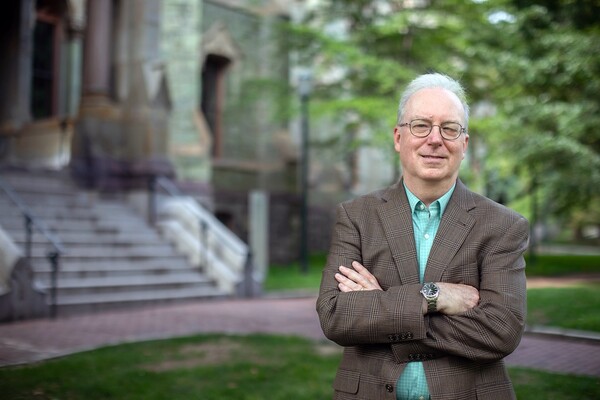
nocred
It may be sheer coincidence that this is the 30th anniversary of the Penn Museum of Archaeology and Anthropology’s famous Maya Weekend. But then again, with all the mystery surrounding the significance of the year 2012 among the ancient Maya, it may not be a coincidence at all.
For three decades, Maya Weekend has brought together world-class historians, artists, archaeologists, anthropologists, Maya enthusiasts, and the general public for three days of lectures, workshops, and events centered on the history, language, and culture of the ancient and modern Maya.
This year, the weekend, which runs from Friday, May 4, through Sunday, May 6, is being held in conjunction with the opening of the Museum’s newest exhibition, “Maya 2012: Lords of Time.” The exhibition takes a closer look at the prevalent thought that the Maya predicted a cataclysmic event would occur in December of 2012. Some people believe that because Dec. 21, 2012 marks the end of the Maya calendar it also marks the end of the world. But Maya scholars dispute the theories, explaining that the December date is simply the end of a unit in time (called a b’ak’tun) that was used in what was known as the Long Count Calendar, which was one of many tools the ancient Maya used to record time.
Loa Traxler, associate deputy director of the Penn Museum and curator of “Maya 2012: Lords of Time,” says the theories about the end of the world have come from “a mash-up of ideas and drama that has been given to this event” by New Age philosophy, millennial fervor, and the misinterpretation of Maya calendar systems.
“The truth is, the emphasis we in modern times have given to this event has no connection with ancient or contemporary Maya culture,” Traxler says.
Presented in partnership with the Instituto Hondureño de Antropologia e Historia of the Republic of Honduras, the exhibition explains to visitors the Maya’s philosophy of time and how their various methods of recording of days revolved around their mighty rulers.
It also features more than 100 objects and artifacts, some of which have very recently been excavated by Penn Museum archaeologists at the site of Copan, Honduras, and are on loan from the Instituto Hondureño de Antropologia e Historia. Participants of Maya Weekend will get to preview the exhibition before it opens to the general public.
“The weekend brings in people who are new to Maya studies as well as people at the other end of the spectrum, who have made the study of Maya culture their life’s work,” says Traxler. “Each year we take a particular theme or idea and delve into it. This year we want to really give perspective on the 2012 phenomenon.”
David Stuart, professor of Mesoamerican art and writing at the University of Texas at Austin, will present a lecture titled “The Structures and Symmetries of Maya Time.” Barbara Arroyo of the Kaminaljuyu Archaeological Zone of Guatemala will speak on “Keeping Time in the Maya Highlands,” and John Hoopes, the director of global indigenous nations studies at the University of Kansas, will discuss “The History of the 2012 Phenomenon.”
Participants will also be able to attend talks and workshops about current archaeological work being done at Maya sites, past and present weaving traditions of the Maya, and the Maya system of calendars.
Additionally, the weekend will include hands-on hieroglyphic workshops for beginners and advanced glyph readers. These interactive classes have become a popular tradition of Penn’s Maya Weekend, Traxler says.
“It’s an immersion weekend, and it is lots of fun,” Traxler explains. “We hope people will come away with a much better sense of who were, and who are, the Maya.”
Those interested in attending the entire weekend of events, or just a day or two of talks and workshops, can register online at www.penn.museum/college-and-adults/201-maya-weekend.html.
The “Maya 2012: Lords of Time” exhibition will open on Saturday, May 5, and will run until Jan. 13, 2013. More information about the exhibit can be found at the Museum’s website: www.penn.museum/sites/2012.

nocred

Image: fcafotodigital via Getty Images

Image: Mininyx Doodle via Getty Images

Charles Kane, Christopher H. Browne Distinguished Professor of Physics at Penn’s School of Arts & Sciences.
(Image: Brooke Sietinsons)